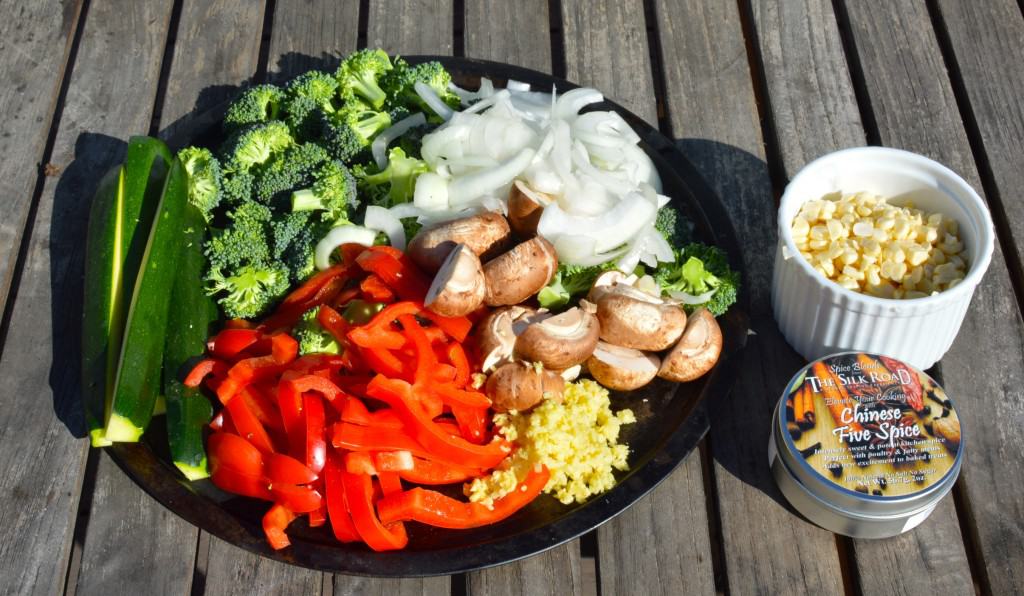I adore Asian cuisine. I cannot completely identify what specifically speaks to me, but if I had to guess, it would be its diversity. Not only are there regional differences in Asian cooking styles and techniques, but the myriad of ingredients that also vary by region leave the imagination exhausted with possibilities.
Like many Americans, I am most familiar with the Americanized versions of the stir-fries and what I like to call the “with” dishes; beef with broccoli, chicken with cashews, pork with noodles just to name a few.
I remember when our family got our first wok, and our first Chinese food cookbook to go along with it. Even as a young cook’s helper, I knew that the ingredients we cooked in the wok were different than other ways we made dinner. The veggies were even cut differently. But it was those differences that made the homemade Chinese food something I always looked forward to.
The more that I read, travel, and learn about Asian cuisine, I tend to try more specific preparations based on regional differences. I find I enjoy the stew-like qualities of Thai food, the freshness of Vietnamese dishes, and the simplicity that Japanese food has to offer. I have experimented with different spices and seasonings to chase down the authentic tastes of far-away lands and even gone as far as growing my own Kaffir Lime tree so I could have its fragrant citrus leaves readily available to cook with if I felt the urge.
Feeling nostalgic, I dusted off my wok and let my taste buds reminisce about the homemade Chinese food of my childhood. One of the reasons I seldom use my wok is that I am just not equipped for the high heat required to cook hot and fast. In addition, my kitchen has no formal ventilation, keeping the smells of the stir-fry in the house for the foreseeable future. It just so happens that my wok fits fairly well on my grill making it a great alternative to the constrained heat and ventilation of my kitchen.
I set the wok directly atop glowing lump charcoal. It is amazing how quickly it heats up and is ready for cooking. I had previously prepped broccoli, red pepper, mushroom, sweet onion, ginger, garlic, fresh corn, and zucchini for the stir-fry by cutting them into bite-sized pieces. Cutting veggies to uniformly sized pieces promotes even cooking. I find it to be visually appealing as well.
I added enough coconut oil to the wok to coat its high walls as well as its rounded bottom. It instantly glistened and almost looked alive atop the high heat. This was my cue to add the veggies. I dumped them in and the wok came alive with the sounds and smells of stir-fry. First, I smelled ginger. Next I smelled garlic. It smelled like when you walk by a restaurant and it makes you hungry. I stirred the veggies high up the walls of the hot wok. The searing heat wilted and colored the veggies intensifying the flavors and bringing forward their natural sugars. I added The Silk Road’s Chinese Five Spice Powder along with some soy sauce and water for additional flavor. The liquids work well at allowing all the flavors to mingle. Chinese Five Spice was a staple of our Asian culinary adventures when I was a kid and I wanted to use it again. It brings a nutty, savory pizzazz to the dish that would be conspicuous in its absence.
The meats consisted of Ahi tuna, which had been marinating in soy sauce, Sake, ginger, Sriracha, and garlic. I also had a couple of beef tri-tip strips that were generously seasoned. One with a Harissa Moroccan spice blend and the other with salt and pepper. The meat was grilled and served aside the veggie stir-fry with jasmine rice.
The dinner was extremely fun to cook and a fantastic trip down memory lane. The sights, sounds, and smells of Chinese style stir-fry brought back fond memories but by cooking this dish outside and on the grill I could not help but to also create some new ones.








Comments
No Comments